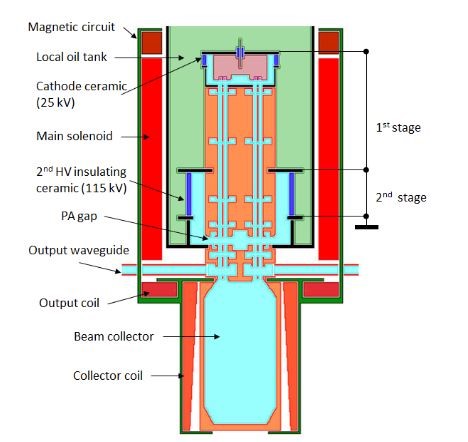Cockcroft Institute researchers in collaboration with CERN have been exploring novel technologies for major savings in the energy consumption and cost of future accelerators, as an article that has just been published in Accelerating News highlights.

The original idea to use a DC post acceleration of a pre-bunched beam in a single beam klystron was proposed already back in 1963. More recently, as an attempt to develop a technological and compact solution for high efficiency, high power L-band klystrons, these ideas were revisited and further improved in application to the CLIC Multi-Beam Klystron.
In its novel configuration with Two Stages Multi-Beam Klystron, the cathode and the two stages are connected in series, as shown below.

The high-voltage post acceleration gap is located in the middle of the designated drift tube and separates the two stages, so that the second stage and the collector are connected to the ground potential. The first stage operates at a relatively low voltage (high perveance), thus the bunching circuit length can be rather short. The second stage deals with a high voltage (low perveance) beam. The TS configuration combines the high RF power production efficiency with a very compact RF circuit length. In addition, the second stage can be operated in DC mode, thus the modulator topology can be simplified (cost).
This technology can potentially also be beneficial for continuous wave UHF Megawatt level devices that are expected to be used in future large-scale accelerators such as the Future Circular Collider. To find out more, please read the full article in Accelerating News.
